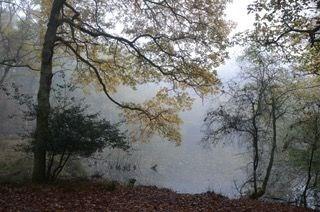
10 minute read
Essex residents urged to test carbon monoxide following serious incident
Essex residents urged to test carbon monoxide alarms following serious incident
Essex County Fire and Rescue Service has issued a warning to residents to take action against a ‘silent killer’.
Advertisement
On Friday 18th November, firefighters were called to a house in Basildon where a gas cooker had been left on causing a strong smell of gas. It was not clear how long the cooker had been on, but it is possible it had been on all night.
Fire crews tested the air quality and found a high level of carbon monoxide inside the property. The occupant, an elderly man, was left in the care of the Ambulance Service as a precaution. “Carbon monoxide poisoning is often called the silent killer as without a carbon monoxide detector, it’s difficult to detect the poisonous gas.
“You can buy a carbon monoxide detector from most DIY stores and if you are in a rented property, the landlord has to provide a carbon monoxide detector.
“Remember to test them regularly, at least once a month when you test your smoke alarms.”
Carbon monoxide is known as a silent killer. You can't see it, smell it or taste it. Which is why it's so important you have working carbon monoxide alarms if you have a gas boiler, gas appliances or an open fire or log burner.
A working carbon monoxide detector can detect harmful carbon monoxide levels in your home and can help protect you and your family.
Will Newman, Head of Prevention at Essex County Fire and Rescue Service said: “With the weather getting colder, more of us will be starting to use our heating and it’s really important that you have a working carbon monoxide detector at home if you If your carbon monoxide alarm goes off or you experience any symptoms of carbon monoxide poisoning: • Turn off any gas appliances • Open windows and doors to ventilate the property • Do not use your appliances/open fire/log burner until it has been inspected by a competent tradesperson • If you feel unwell, call 111 and speak to the NHS • If you think there is an immediate danger, call the Gas Emergency Helpline on 0800 111 999 or the relevant service for your area • Call a registered engineer to check all your fuel-burning appliances. To check if an engineer is on the gas safe register visit www.gassaferegister.co.uk Source: Essex County Fire & Rescue Services Ltd





Parish set to become single district council ward
A Local Government Boundary Commission review of district council ward boundaries includes a proposal to include the parish of North Weald Bassett in one single district council ward.
Currently the Parish is covered by three district council wards.
Parish council vice-chairman councillor Ann Grigg told the last council meeting: "I think that's better."
Councillor highlights street lighting concerns
Concerns have been raised by a North Weald parish councillor over the number of street lights that are not working in the parish.

Councillor Andy Tyler told the last parish council meeting a number of residents had spoken to him about the issue.
He said: "We're paying for everything and getting absolutely no service." The word ‘magazine’ is used to describe a periodical publication consisting of works by different authors – ‘North Weald Village Life’ magazine being an example. But did you know that magazine’ originally meant something completely different, and came from a language other than English? Read on to find out more! For centuries, Arabic has contained the noun ‘makhzan’ meaning ‘storehouse’, and its plural form ‘makhazin’ meaning storehouses’. The plural form was soon incorporated into Italian as the word ‘magazzino’, and in the 1580s, into French as magasin’. Both words retained the original Arabic meaning as being a (singular) place for storing goods. In the 1600s, the word entered English for the first time – but with a narrower definition. At this point in history, Britain’s military was engaged in colonisation efforts. For this reason, magazine’ was specifically used to denote a military storehouse for storing weaponry and ammunition. The meaning of ‘magazine’ in the publication sense did not merge in Britain until the 1700s. At this time, content was largely being consumed in the form of news stories (in newspapers) or in-depth insights (in books). To add variety, publishers also began to produce general-interest periodicals. One such periodical was first released in 1731, and covered a range of topics from science and history, to poetry and gardening. Its author, Edward Cave, settled upon the name ‘Gentleman’s Magazine’ – as he wanted the publication to act as a ‘storehouse of information’ for its gentleman readers. Cave’s use of the word ‘magazine’ soon caught on as, until this point, the English language did not have a specific term for these general-interest periodicals. This is why we continue to refer to such publications as ‘magazines’ today. Source: Amar
• Kitchens and bedrooms supplied and fitted
to your specification
• A complete service from design to finish • Competitive prices guaranteed • High levels of expertise by a locally recom-
mended craftsmen

For a free estimate contact:-
Roger Linsdall
Telephone: 01992 523277 Or mobile: 07980 555147

Why Wintry Wood Wonderers Wednesday Warm-Ups?
Wintry Wood Wonderers Wednesday Winter Warm-Ups was formed because all about us seems doom and gloom with little to lift the spirits, I hoped a walk in the forest would bring cheer and a sense of well being and it really does. Even when the weather turns cold and wet there is always something to see that makes you feel glad you made the effort to get up and go. We walk in Wintry Wood and the adjacent buffer land owned and managed by the Corporation of London. Wintry Wood/The Lower Forest is a little known part of Epping Forest it seems, from it’s boundary at the traffic light junction of the North Weald Road with the Harlow Road (B1393) to Woodside all of this magical wood is in the parish of Thornwood. It costs the local residents nothing for the care and maintenance involved in having a forest open for public use. It is a wonderful amenity both good for our physical and mental wellbeing - a wonderful place to take a stroll. If you would like to soak up the atmosphere that is Wintry Wood, and are perhaps a little apprehensive of walking in it alone why not consider joining in a “Wintry Wood Wonderers Wednesday Winter Warm Ups” we meet on the 2nd Wednesday of the month at forest gate no.11 which is opposite St Margarets Hospital at 11am. The walk lasts for about 1-11/2 hours taken at a slow strolling pace, the group has come together for just the purpose of enjoying a walk in the forest with like minded companions, some come alone some with a friend, it is open to everyone of any age, dogs on leads are welcome too. Do not expect a ramble - more of an amble. A stroll with a chance to chat and take in the beauty and history surrounding us. Wednesday - December 14th - 11am - Gate 11 opposite St Margaret’s Hospital Wednesday - January 11th - 11am Wednesday - February 15th - 11am Hoping to see you and meet you there! Any questions or details please contact me 01992 577191 or Friends of Wintry Wood FB page or email friendsofwintrywood@outlook.com Wintry Wood on a Misty Autumn Morning Source: De Spence

The Christmas tree was introduced to Britain from Germany in the early nineteenth century by Queen Charlotte, the wife of King George III, but having a tree in the house at Christmas did not occur outside of the royal family. Queen Victoria as a child was familiar with the custom, and a tree was placed in her room every Christmas, decorated with lights and ornaments, surrounded by presents. After marrying her German cousin Prince Albert, the tradition became widespread throughout Britain when, in 1846, the popular royals were pictured in the Illustrated London News standing with their children indoors around a tree. Victoria was very popular with her subjects, and what was performed at court immediately became fashionable. Soon nearly every home in Britain had a tree with candles, sweets, fruit, gifts and homemade decorations. The Norway spruce is the traditional Christmas tree but others are the Nordmann fir characterised by its dark green colour, and the Blue spruce with its viciously sharp silvery-blue to dark green foliage. There are two other popular Christmas trees - the Korean fir which has bright green needles with white undersides and the fragrant Fraser fir—Mistletoe has long been associated with Christmas. It is a parasitic plant that grows on branches of trees, and extracts nutrients and water from them by rooting into their bark. The most common tree on which it grows is the apple, but it is also found on ash, hawthorn, lime and other trees with soft bark. Because it lives on trees, mistletoe has, through the ages, become the subject of many tales and superstitions. Long ago, the Druids believed that mistletoe was sacred and offered protection from evil as well as being a source of magic. The tradition of kissing under a sprig of mistletoe at Christmas may have derived from the ancient custom of hanging mistletoe outside houses as a sign of hospitality. It is also possible that it originated from a fertility rite as, in medieval times, women wishing to conceive would wrap sprigs of mistletoe around their wrists and waists. Mistletoe is an evergreen and each plant is either male or female. In March, it produces tiny yellowish-green flowers, and pollen from male plants is spread by the wind to female plants. In the winter the female plant develops soft white berries each containing a single seed. Birds, especially mistle thrushes, feed on these and may rub seeds into cracks in bark as they clean the sticky remains of berries from their beaks. When the berries are swallowed by birds, the seeds are not digested but pass unharmed in their droppings. If they land on the bark of a suitable tree they germinate and grow. Holly is one of our native evergreen trees and helps brighten our woodlands in the depths of winter. It is also common in Hedgerows and many people have holly in their gardens. The leaves are leathery with dark green upper surfaces and pale green undersides. Holly bushes and lower tree branches have leaves with sharp spines along the edges and at the tip to protect them from browsing animals while higher up the tree the leaves have only an apical spine. The leaves have waxy surfaces to prevent moisture being lost when the soil is frozen and the tree cannot obtain water. This explains why holly survives well when cut for Christmas decorations. Like mistletoe, holly is either male or female and bears tiny white flowers in May and June. The female flowers develop into berries which are green initially but, by October or November, ripen to crimson. They are readily eaten by birds and the hard holly seeds are passed in their droppings and germinate when they fall on suitable soil. This is why tiny holly plants are often seen growing in our gardens. Keith Snow















